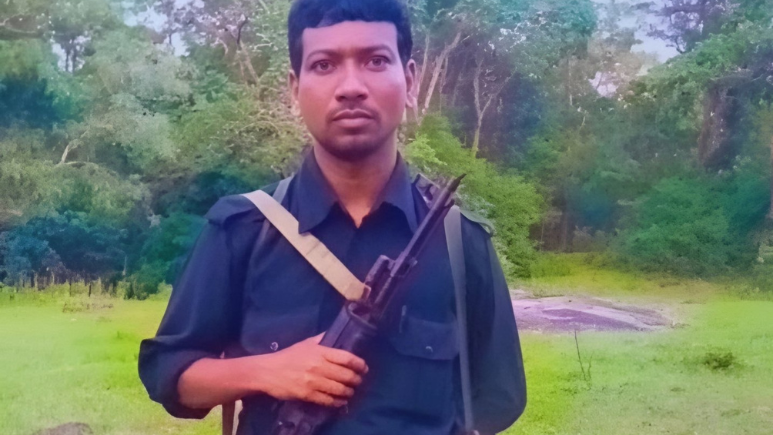Madvi Hidma encounter Andhra Pradesh. Security forces kill top Maoist commander after an intelligence driven operation. What the breakthrough means for the future of Left Wing extremism in India.
Key Encounter in Andhra Pradesh Marks a Major Security Breakthrough
Indian police units carried out a successful anti insurgency mission on November 18, eliminating Madvi Hidma during a close range exchange of fire in the forests near Maredumilli in Alluri Sitharama Raju district. Authorities identified Hidma as a central committee member of CPI Maoist and the long time commander of Battalion One. His wife and four of his armed escorts were also killed while attempting to flee toward the Andhra Chhattisgarh Telangana border.
Weapons, explosives, communication devices and documents were recovered at the site. Officials described the operation as one of the most decisive counter Maoist actions in recent years.
Learn more about Hidma’s background in the section titled Who Was Madvi Hidma.
How Intelligence Networks Led Forces to the Maoist Commander
The encounter followed a series of coordinated intelligence inputs that tracked a group of senior Maoist leaders crossing into Andhra Pradesh after sustained pressure in Chhattisgarh. Senior police officers said actionable intelligence was received two days before the operation which indicated the movement of top commanders into sheltered forest zones.
Teams from Andhra Pradesh, Chhattisgarh and Telangana worked together, monitoring the group with drone surveillance and human sources. Once Hidma’s location was confirmed, specialised units closed in and a heavy exchange of fire ensued for nearly an hour.
See the section Strategic and Psychological Blow to Maoist Operations for the wider impact of this intelligence success.
Who Was Madvi Hidma
Hidma was considered one of the most influential Maoist leaders in central India. A native of Bastar, he joined the organisation at a young age and steadily rose in the ranks. Over time he gained a reputation for planning high profile assaults and mobilising large cadres across multiple districts.
He is linked to several major incidents including the Tadmetla attack in 2010, the Jhiram Ghati ambush in 2013 and many targeted strikes on security forces in Sukma, Dantewada and Bijapur. His ability to organise complex operations made him a critical figure in the Maoist structure.
To understand how his death affects Maoist capacity, read the section below.
Strategic and Psychological Blow to Maoist Operations
Security analysts believe Hidma’s elimination removes a rare commander with both experience and influence. Without his leadership, Maoist units are likely to face disruptions in coordination, training and recruitment. His loss is viewed as a setback for the movement in its traditional strongholds.
Officers say Maoist groups have been under persistent stress because of continuous security operations, communication losses, internal disputes and limited public support. The removal of a senior commander adds to this downward trend.
Explore long term patterns of weakening insurgency in the next section.
Declining Maoist Presence: Surrenders, Internal Divisions and Development Efforts
Across the Red Corridor, Maoist influence has gradually receded. Governing agencies point to three major factors contributing to this shift.
Increase in voluntary surrenders
Many junior and mid level cadres have surrendered recently. Fatigue, lack of resources and disagreement on strategy have contributed to this trend.
Internal disagreements
Reports from multiple states suggest rising friction within the organisation. Arguments over armed struggle versus surrender and disagreements over territorial control have weakened discipline.
Growth in development projects
Security campaigns like Operation Samadhan Prahar have provided space for new roads, health services, mobile connectivity and welfare projects in remote tribal regions. Local communities in several districts now have better accessibility and employment options, making Maoist messaging less persuasive.
For details on how authorities plan to move forward, see the next section.
The Path Ahead: Security Reinforcement and Development Gains
Although the latest encounter has boosted confidence among agencies, officials caution that retaliation attempts cannot be ruled out. Border districts in Andhra Pradesh, Chhattisgarh and Telangana remain on heightened alert.
Administrative teams have been instructed to accelerate infrastructure projects and expand welfare schemes in recently secured regions. Rehabilitation support for surrendered cadres is expected to continue in order to reduce the pool of potential recruits.
This combination of policing and development is likely to shape the trajectory of anti Maoist operations through 2026.


